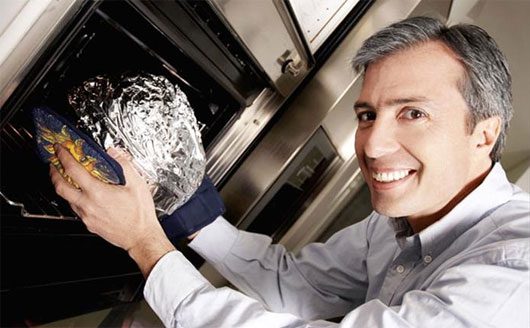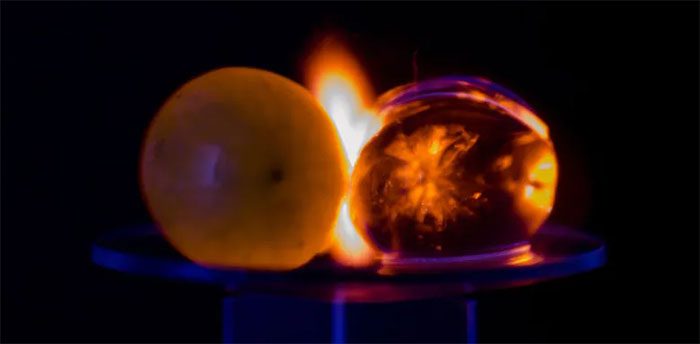What Happens If You Put Metal Objects in a Microwave?
The microwave is one of the greatest inventions of the 20th century. Today, manufacturers still warn against using metal objects, especially aluminum, in microwaves. Doing so could potentially cause fires or explosions. But why is this the case? Let’s explore this through the principle of microwave operation.
The technology used in microwaves is quite simple; it utilizes microwave radiation to heat food. Microwaves are generated by a magnetron, guided through a waveguide into the cooking chamber, and reflected back and forth between the metal walls of the chamber, where they are absorbed by the food. The microwaves in a microwave oven are oscillations of the electromagnetic field, typically at a frequency of 2450 MHz (with a wavelength of about 12.24 cm). Food molecules (water, fat, sugar, and other organic compounds) can absorb this type of wave, causing internal molecular vibrations. These rotational vibrations are transformed into chaotic thermal motion through molecular collisions, thereby heating the food.

Another important point is that glass molecules, some special plastics, or paper are less likely to be heated by microwaves at 2450 MHz. Therefore, food can be placed in containers made of these materials in the microwave, with only the food being cooked. However, when it comes to metals, especially aluminum, the situation is quite different.
Although the interior of a microwave is a Faraday cage consisting of metal or metal mesh, which ensures that microwaves do not escape, the holes in this mesh are much smaller than the wavelength (12 cm). Thus, microwaves cannot escape, but light (with much shorter wavelengths) can pass through, allowing us to see the food inside.
Like a mirror, however, instead of reflecting light, these metal sheets reflect microwaves. If you use a thick aluminum pot in the microwave, the food will never heat up because the microwaves are blocked by the pot.
This applies to thick metal objects, but for thin metal sheets, the situation becomes much worse. The electromagnetic field in the microwave creates a conductive current in the metal. For large, thick metal objects, they can withstand this conductive current without any issues. However, thin metal pieces, such as aluminum foil, can be overwhelmed by the internal current and heat up very quickly. This can cause fires, especially with crumpled aluminum foil, where this phenomenon occurs more intensely.
The oscillation of microwaves can create a concentrated electric field at the corners or edges of the metal object, ionizing the surrounding air, which is why you might hear crackling sounds or see sparks akin to lightning. However, there will be no explosion.
The truth is that your microwave can catch fire if a thin metal sheet is placed inside; however, there won’t be an explosion similar to a gas canister explosion. For thick metal objects, there will be no incidents, only the food inside will not get heated.
Many modern microwaves are equipped with a grilling mode, where the microwave uses heat from heating elements or halogen bulbs instead of microwaves. In this mode, the microwave functions like a regular electric oven, allowing you to use wrapping paper and metal trays inside the microwave.
Metal is not the only object that can create sparks in a microwave. There are many trending videos online showing a half grape creating spectacular plasma sparks. Plasma is a type of gas made up of charged particles.

Many theorists have attempted to find an explanation, suggesting it must relate to the accumulation of electric charges like in metals. However, Aaron Slepkov and his colleagues conducted scientific experiments to get to the bottom of the phenomenon.
“What we found is much more complex and interesting,” he stated.
By filling hydrogel spheres—super absorbent polymers used in disposable diapers—with water, the researchers discovered that geometry is the most critical factor in creating sparks in grape-like objects. The spheres, the size of grapes, happen to be particularly excellent at concentrating microwaves.
The size of the grape allowed microwave radiation to accumulate inside, eventually generating enough energy to strip electrons from sodium or potassium inside the grape, creating sparks that developed into plasma.
The research team repeated the experiment with quail eggs—similar in size to grapes—initially using whole quail eggs and later with eggs that had their insides separated from the shells. The eggs filled with lubricant created hot spots, while the empty eggs did not produce any reactions. This indicates that to create a spark resembling that of metals, a water-filled chamber the size of a grape is necessary.





















































